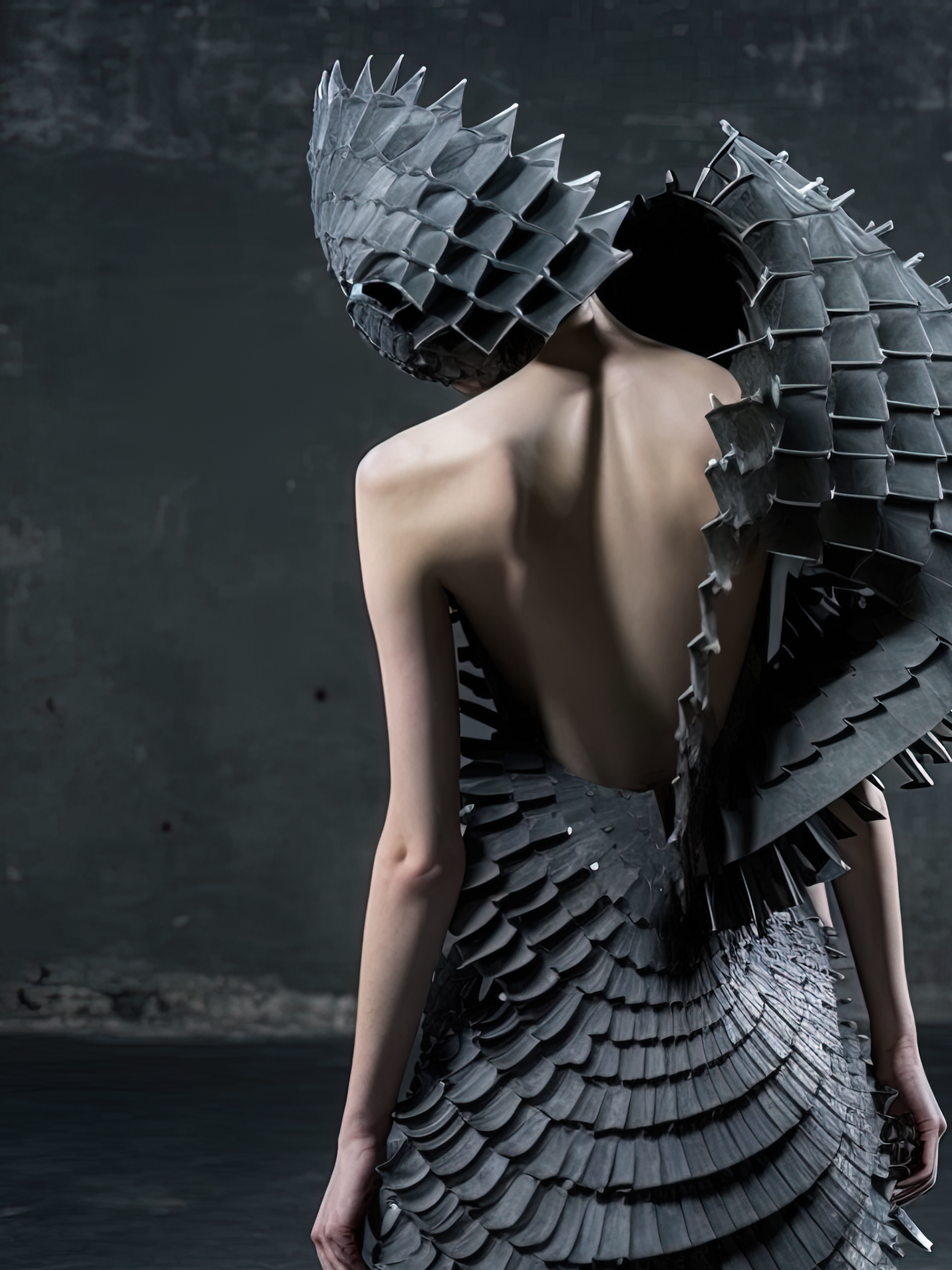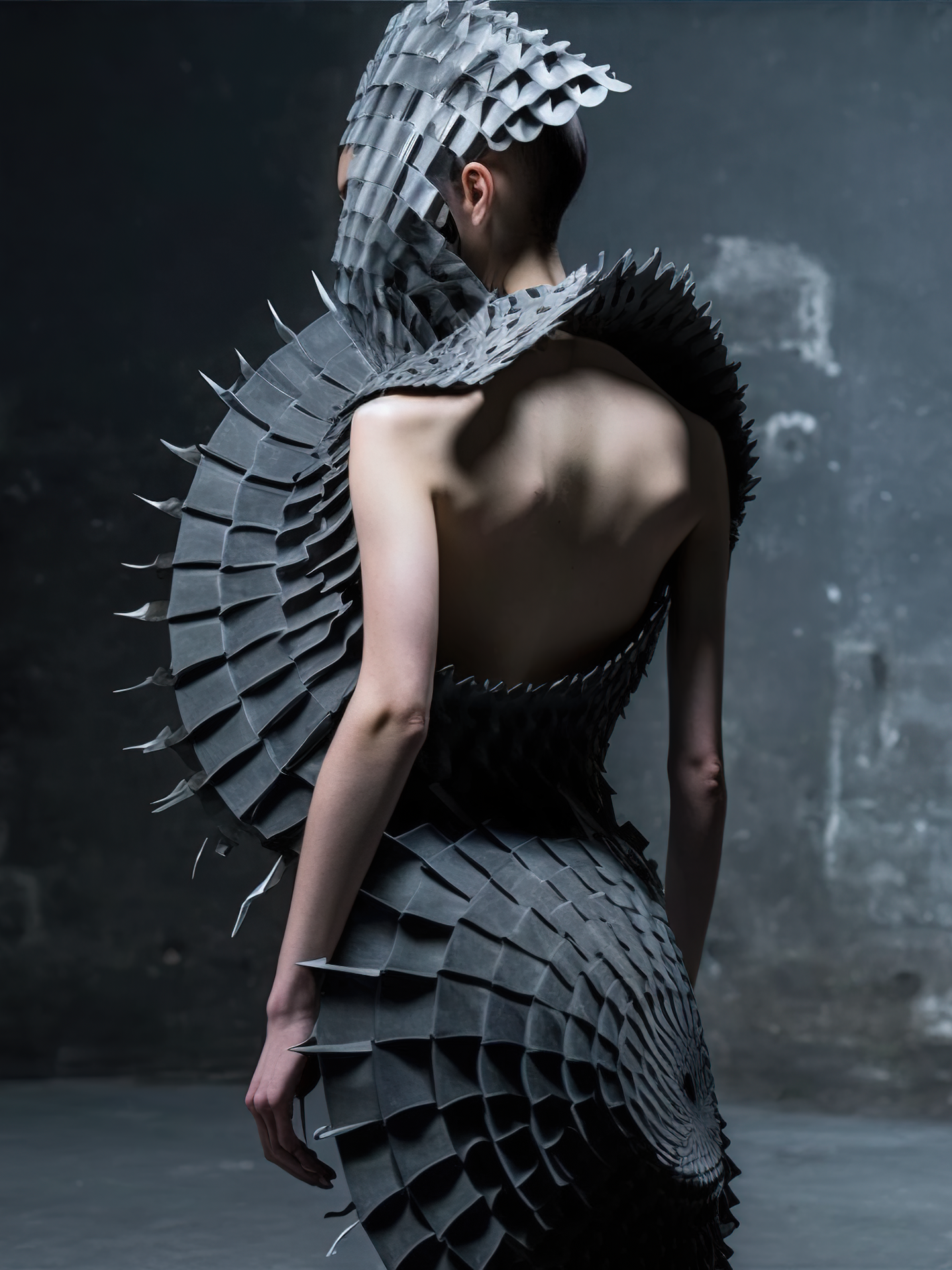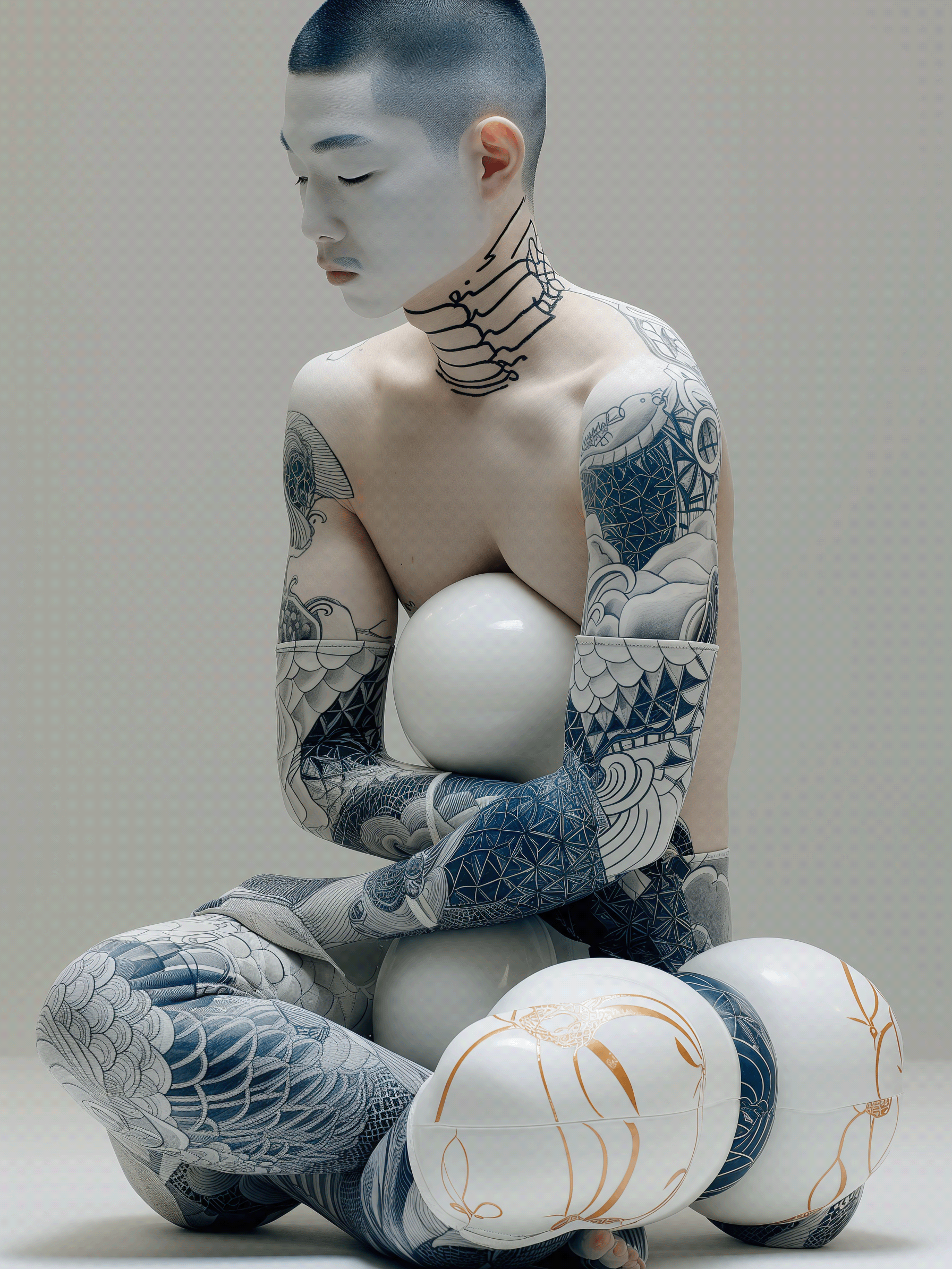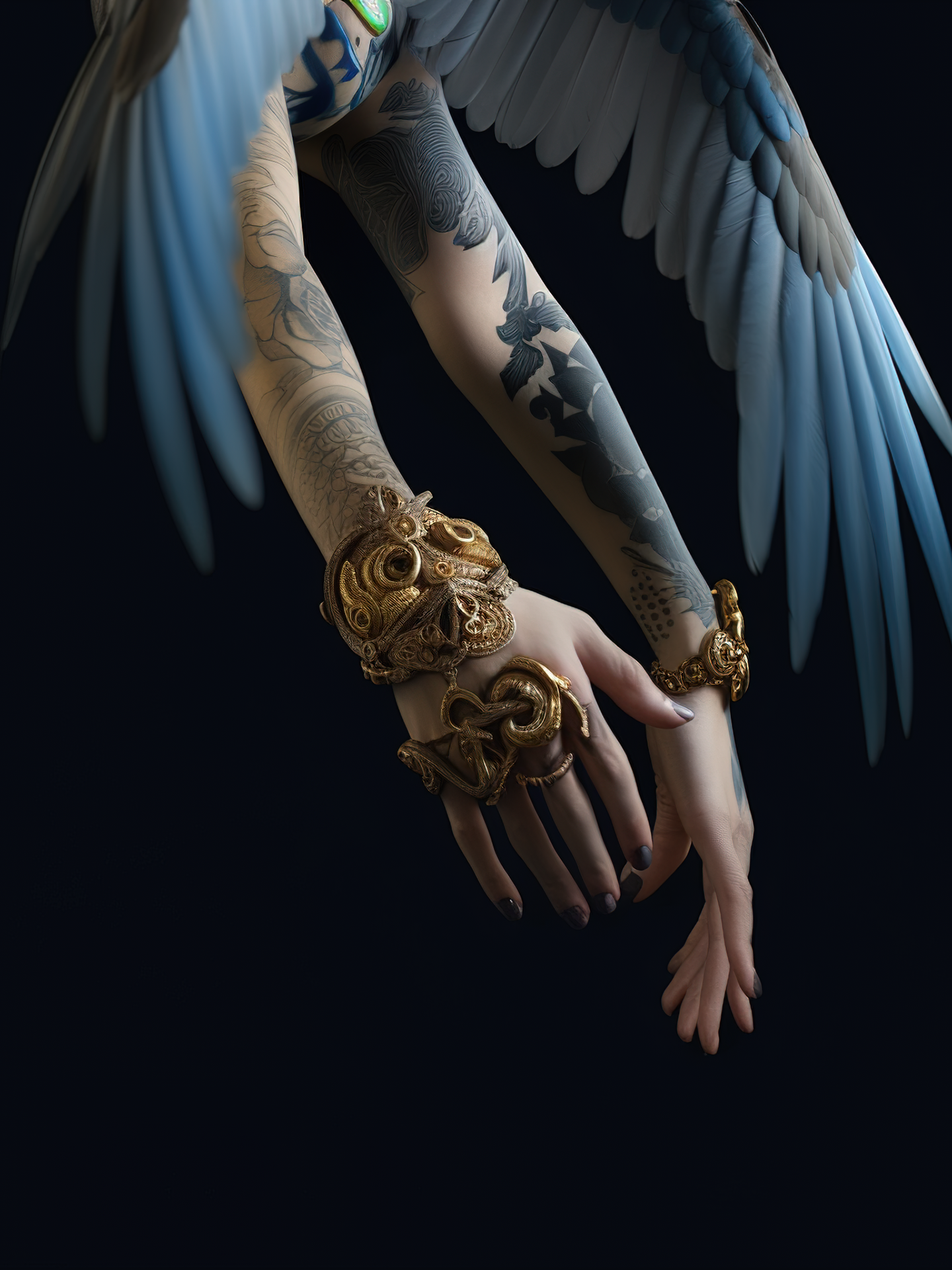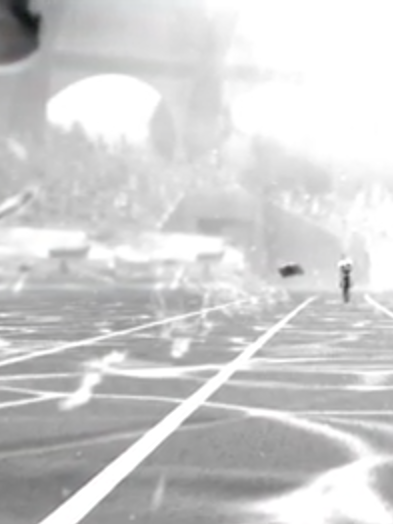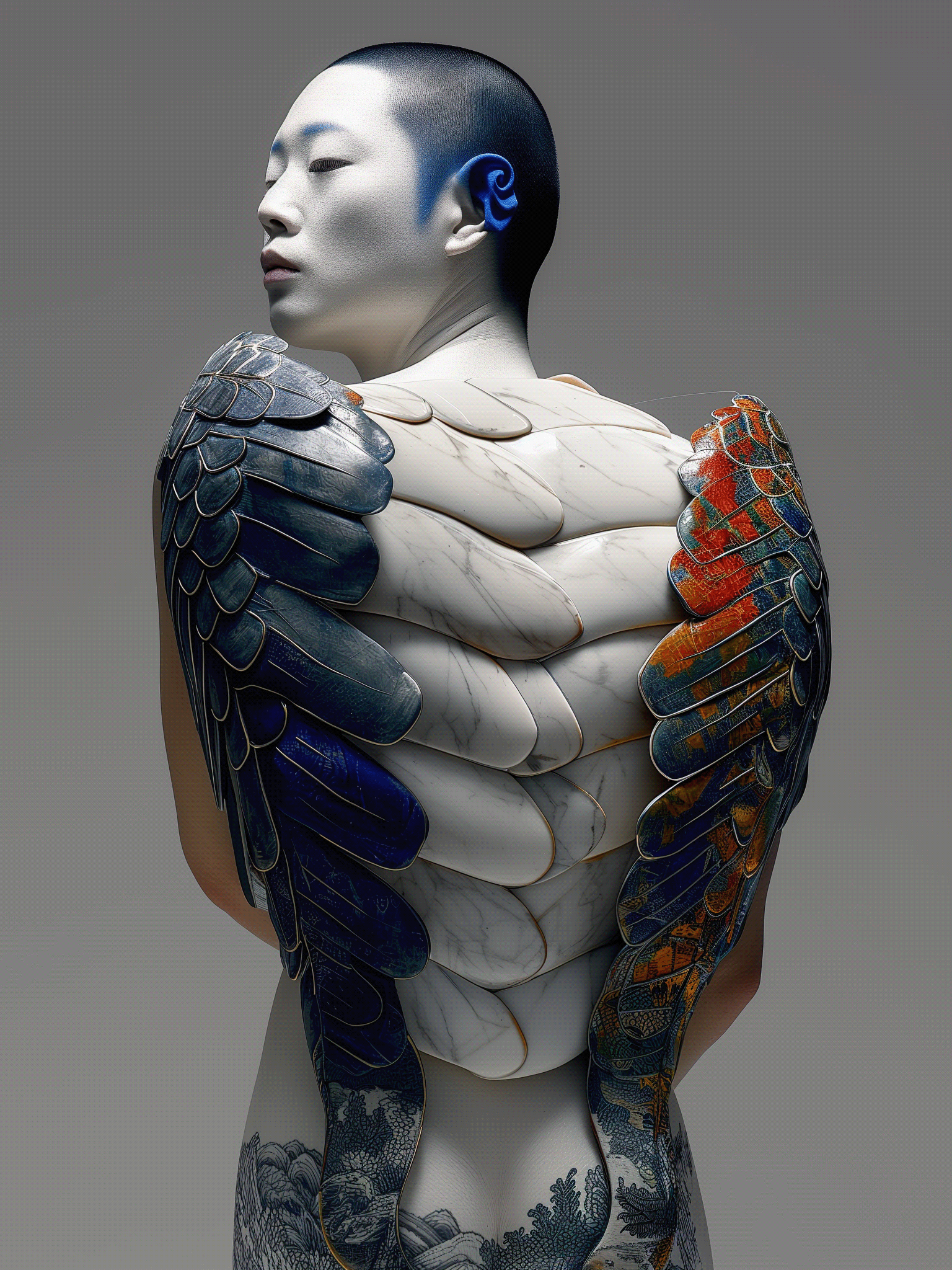AI works depict pre-1600s historical Japanese clothing in an abstract and surreal way. I wanted to bring ancient looks with a touch of futuristic elements like helmets
Early Japanese clothes were plain and practical, suited to a nation of hunters and gatherers, who later evolved into farmers and craftsmen. During the Heian period (794-1192) Japan’s most iconic garment, the kimono, was introduced. Women of higher social status would keep the majority of their skin hidden under several layers, with ladies of the Imperial Court sometimes wearing a complex kimono ensemble called junihitoe consisting of 12 or more layers, and weighing up to 20kg. Nobles later began to wear kosode, a basic robe that was previously worn undergarments, together with skirt-like pants called hakama.
Early Japanese clothes were plain and practical, suited to a nation of hunters and gatherers, who later evolved into farmers and craftsmen. During the Heian period (794-1192) Japan’s most iconic garment, the kimono, was introduced. Women of higher social status would keep the majority of their skin hidden under several layers, with ladies of the Imperial Court sometimes wearing a complex kimono ensemble called junihitoe consisting of 12 or more layers, and weighing up to 20kg. Nobles later began to wear kosode, a basic robe that was previously worn undergarments, together with skirt-like pants called hakama.

